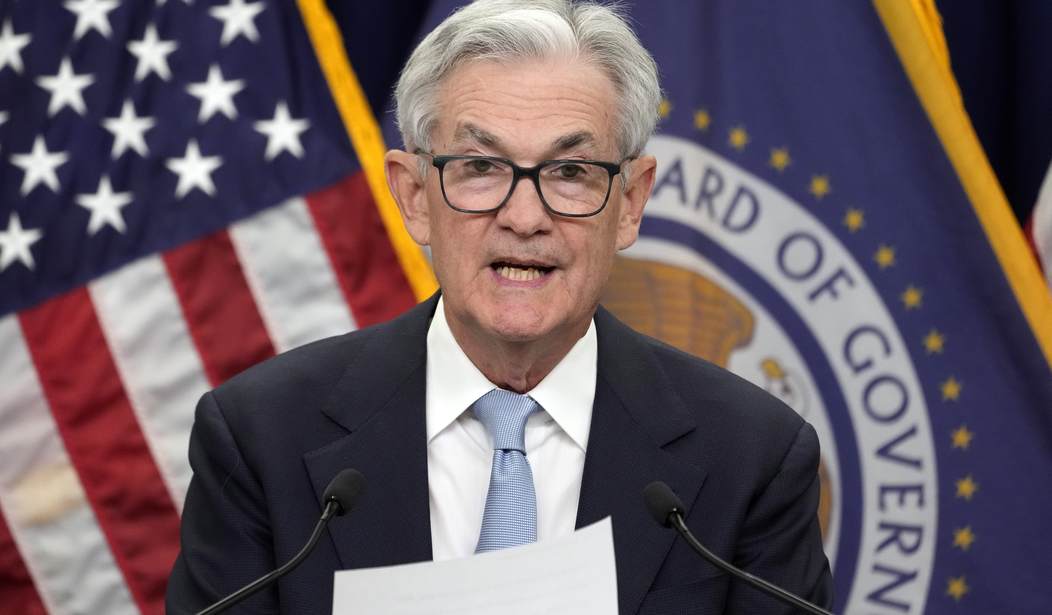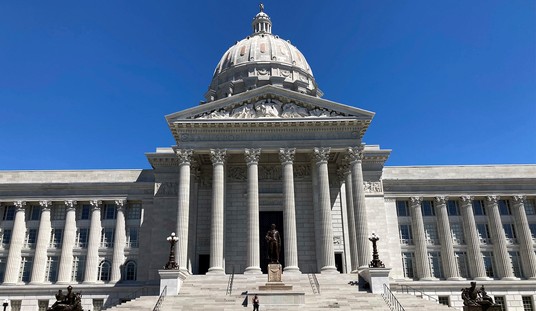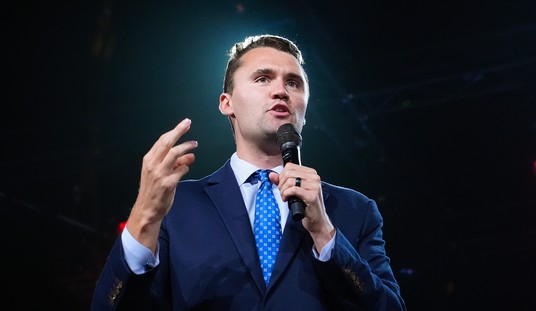The Federal Reserve elected Wednesday not to raise interest rates. The decision to hold the federal funds rate at 5 to 5-1/4 percent was unanimous, though the median rate is forecast to rise to 5.6 percent by the end of 2023, with a drop back to 4.6 percent by the end of 2024.
Unanimous hold
*FED HOLDS BENCHMARK RATE IN 5%-5.25% TARGET RANGE
*FED MEDIAN RATE FORECASTS RISE TO 5.6% END-`23, 4.6% END-`24https://t.co/z2AsLeMuT8
— Joe Weisenthal (@TheStalwart) June 14, 2023
In March, the Fed elected to raise the interest rate by another quarter percent amid continued fears of a recession.
Wednesday’s news comes following the May Consumer Price Index report, which indicated inflation has been cut almost in half from its 2022 peak, though it remains high, at four percent.
In connection with Wednesday’s decision, the Fed issued a statement, citing a modest expansion of the economy, with robust job gains and a low unemployment rate, though acknowledging that “Inflation remains elevated”:
Recent indicators suggest that economic activity has continued to expand at a modest pace. Job gains have been robust in recent months, and the unemployment rate has remained low. Inflation remains elevated.
The U.S. banking system is sound and resilient. Tighter credit conditions for households and businesses are likely to weigh on economic activity, hiring, and inflation. The extent of these effects remains uncertain. The Committee remains highly attentive to inflation risks.
The Committee seeks to achieve maximum employment and inflation at the rate of 2 percent over the longer run. In support of these goals, the Committee decided to maintain the target range for the federal funds rate at 5 to 5-1/4 percent. Holding the target range steady at this meeting allows the Committee to assess additional information and its implications for monetary policy. In determining the extent of additional policy firming that may be appropriate to return inflation to 2 percent over time, the Committee will take into account the cumulative tightening of monetary policy, the lags with which monetary policy affects economic activity and inflation, and economic and financial developments. In addition, the Committee will continue reducing its holdings of Treasury securities and agency debt and agency mortgage-backed securities, as described in its previously announced plans. The Committee is strongly committed to returning inflation to its 2 percent objective.
In assessing the appropriate stance of monetary policy, the Committee will continue to monitor the implications of incoming information for the economic outlook. The Committee would be prepared to adjust the stance of monetary policy as appropriate if risks emerge that could impede the attainment of the Committee’s goals. The Committee’s assessments will take into account a wide range of information, including readings on labor market conditions, inflation pressures and inflation expectations, and financial and international developments.
Voting for the monetary policy action were Jerome H. Powell, Chair; John C. Williams, Vice Chair; Michael S. Barr; Michelle W. Bowman; Lisa D. Cook; Austan D. Goolsbee; Patrick Harker; Philip N. Jefferson; Neel Kashkari; Lorie K. Logan; and Christopher J. Waller.
The Fed continues to emphasize its commitment to returning inflation to its two percent objective.
Though they held the rates steady Wednesday, as noted above, they signaled additional hikes may be looming.
Federal Reserve officials agreed to hold interest rates steady after 10 consecutive increases but signaled they are leaning toward raising them next month if the economy and inflation don’t cool more.
Most of them penciled in two more rate increases this year and lifted their expectations for growth and inflation in projections released Wednesday after their two-day policy meeting.













Join the conversation as a VIP Member